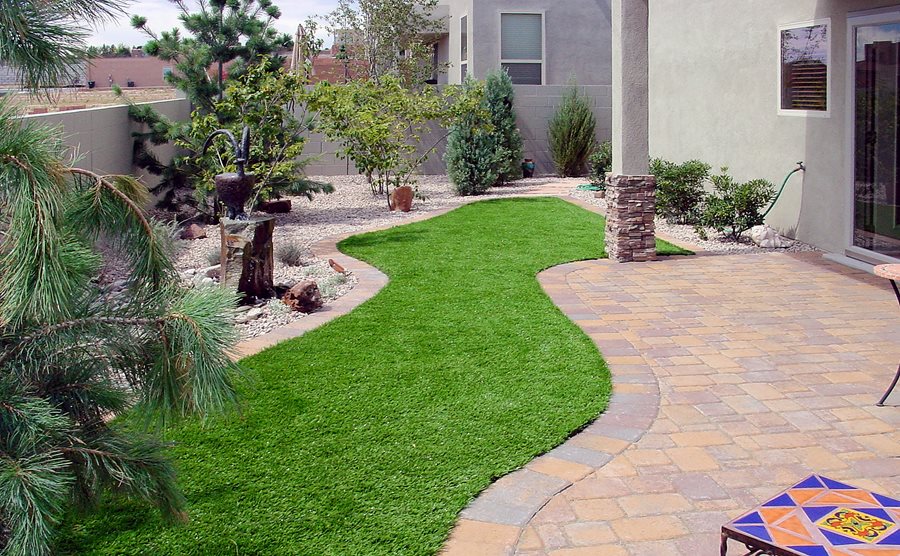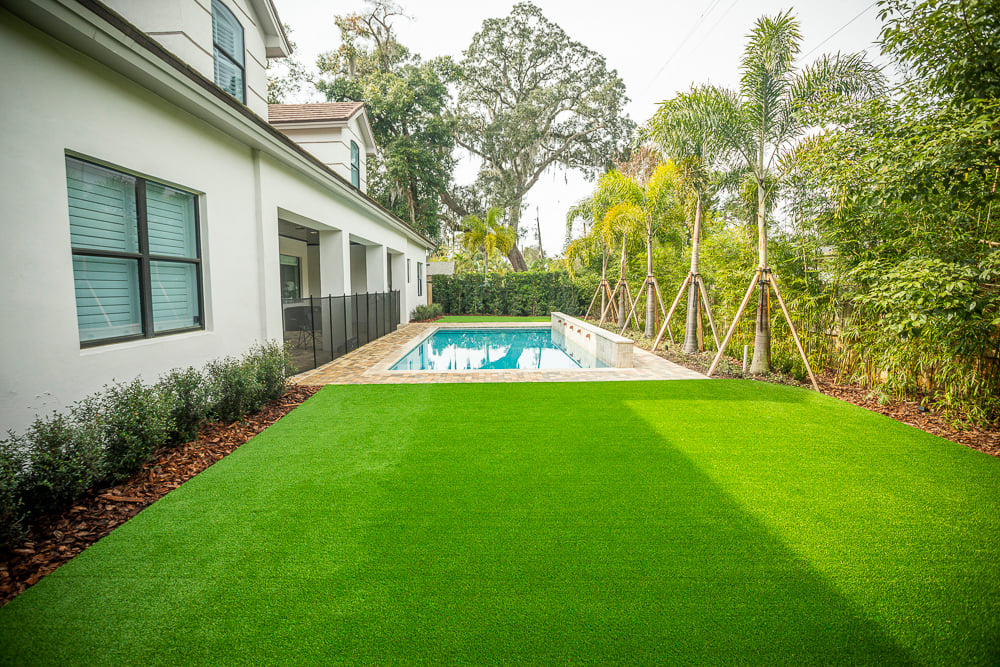Look Into the Environmental Conveniences of Opting for Artificial Grass Solutions
The adoption of fabricated grass options presents a compelling opportunity to attend to pushing environmental difficulties. By considerably lowering water usage and lessening the application of hazardous chemicals, these choices not only promote lasting landscape design but likewise secure local ecological communities.
Water Conservation Perks
Among one of the most significant advantages of synthetic grass is its capacity to conserve water. Conventional lawn yards need significant watering, specifically in locations prone to dry spell or water limitations. In contrast, man-made turf does not require watering, significantly reducing the overall demand for water sources. This feature is particularly useful in dry regions where water scarcity is a pushing worry.
By removing the requirement for normal watering, fabricated grass adds to sustainable landscape methods and helps minimize the environmental effect of too much water usage. Furthermore, the preservation of water expands to the reduction of overflow, which can lead to soil erosion and river pollution.
In addition, the setup of fabricated turf enables communities and home owners to allot water resources much more successfully, concentrating on important uses such as alcohol consumption water and agriculture. The shift towards synthetic grass not only advertises accountable water usage yet also aligns with broader environmental goals focused on protecting all-natural resources.
As neighborhoods significantly focus on sustainability, the water preservation benefits of man-made grass offer an engaging instance for its fostering in property and industrial landscaping projects.
Reduced Chemical Use
The transition to man-made grass considerably decreases the reliance on chemical treatments typically used in all-natural lawn upkeep. Conventional lawn management normally involves the application of herbicides, plant foods, and chemicals to promote growth and control insects. These chemicals can position risks to human wellness, regional wild animals, and the environment, adding to soil and water contamination.
In contrast, fabricated turf gets rid of the demand for these hazardous materials. By reducing the release of synthetic substances right into the community, man-made lawn advertises healthier dirt and water systems.
Moreover, the absence of chemical drainage related to synthetic grass setups aids safeguard local waterways from air pollution, sustaining marine life and keeping biodiversity. Arizona artificial turf. As neighborhoods progressively prioritize sustainable methods, going with man-made grass presents a practical option that aligns with environmental conservation goals. Through this change, homeowner can take pleasure in rich green spaces without endangering eco-friendly wellness, leading the way for an extra lasting future
Lower Carbon Footprint

In addition, the installment of synthetic grass can cause significant water conservation. Natural lawns need significant quantities of water for irrigation, which not only includes in the carbon impact connected with water extraction and treatment but additionally stress neighborhood water resources. On the other hand, synthetic grass requires marginal maintenance, needing no watering, therefore considerably minimizing water use and its linked power expenses.
Furthermore, the longevity of synthetic grass adds to its lower carbon impact. With a life expectancy of up to 15 years or more, the demand for constant replacements is decreased, leading to much less waste and reduced power intake in production and getting rid of traditional turf options. On the whole, fabricated turf provides a lasting alternative for environmentally conscious landscaping.
Environment Preservation
Habitat preservation is a crucial factor to consider in the dispute over landscape design choices, especially when contrasting synthetic grass to all-natural yard. All-natural lawn lawns frequently require considerable upkeep, including the usage of chemicals, plant foods, and herbicides, which can adversely influence neighborhood ecosystems. These chemicals can leach right into the soil and rivers, damaging native flora and animals and interrupting neighborhood habitats.
In comparison, artificial grass offers an opportunity to decrease the ecological footprint of landscaping. By choosing artificial turf, property owners can minimize the disturbance of natural habitats connected with standard grass care practices. Synthetic grass removes the requirement for hazardous chemicals, therefore safeguarding nearby wild animals and maintaining the stability of bordering environments. The setup of artificial lawn can lead to the conversion of previous lawn areas right into more biodiverse landscapes, such as pollinator gardens or native plant locations, which can support regional wildlife.
Ultimately, the shift to synthetic grass not just saves water and reduces maintenance efforts yet also cultivates a more unified connection in between human activities and the natural atmosphere, promoting habitat conservation at the same time.
Long-Term Sustainability
Lasting sustainability is an important great post to read aspect in assessing the advantages of man-made turf over standard lawn yards. Among one of the most considerable benefits of artificial lawn is its toughness; it can last approximately 15-20 years with minimal upkeep, whereas natural grass calls for regular reseeding and replacement. This durability decreases the requirement for consistent resources, such as water, plant foods, and pesticides, which are vital for maintaining a healthy and balanced grass yard.
Additionally, synthetic grass adds to a reduction in carbon discharges connected with yard treatment equipment. Typical grass typically call for gas-powered mowers, click over here now leaners, and blowers, every one of which contribute to air contamination. Artificial turf companies phoenix. On the other hand, man-made turf removes the need for such devices, advertising a cleaner environment
Additionally, the manufacturing of synthetic grass progressively utilizes recycled materials, improving its sustainability account. As suppliers embrace environment-friendly techniques, the ecological impact of synthetic grass proceeds to reduce.

Conclusion
The adoption of synthetic grass solutions presents significant environmental advantages, including substantial water preservation, lowered reliance on harmful chemicals, and a lower carbon impact. Furthermore, artificial grass help in protecting natural habitats by reducing land disruption and advertising long-lasting sustainability via making use of sturdy materials. Collectively, these factors underscore the potential of synthetic grass to contribute positively to ecological health and supply a sensible option to conventional landscape design techniques in a significantly resource-conscious globe.
In contrast, artificial turf does not require watering, substantially decreasing the total demand for water resources. a knockout post By decreasing the release of artificial compounds right into the environment, synthetic lawn promotes healthier soil and water systems.
In addition, the setup of artificial grass can result in considerable water conservation. In comparison, artificial grass needs marginal upkeep, requiring no watering, consequently significantly minimizing water use and its connected power costs.
